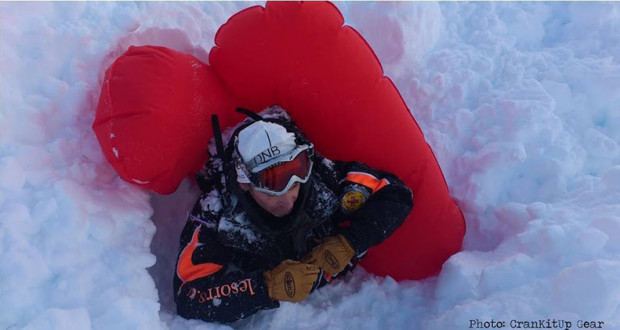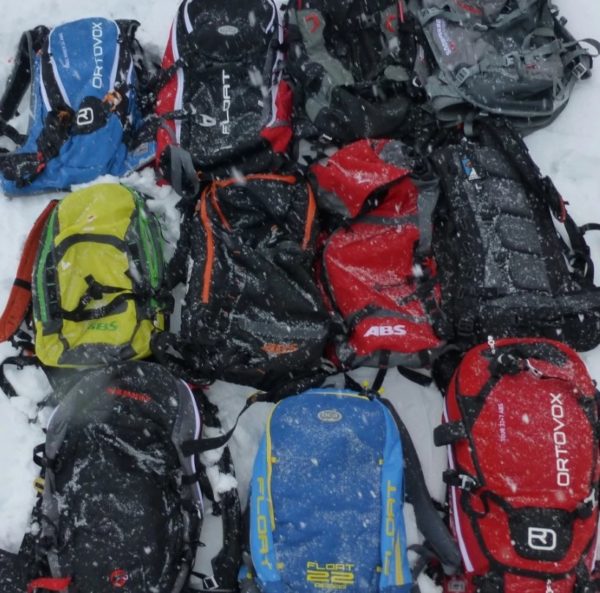An inflatable backpack designed to keep you near the surface of an avalanche.
An avalanche airbag is a piece of protective equipment designed to keep its wearer on or near the surface of a flowing avalanche. Airbags are normally integrated into a backpack and are deployed by pulling a trigger in the case of an avalanche incident. When the trigger is pulled, the airbag inflates, increasing the size of the wearer relative to other debris. If you’ve ever shaken a jar of mixed nuts, you’ve noticed that the larger nuts rise to the surface. In a moving avalanche, larger debris tends to rise above smaller debris, so this helps the airbag and its wearer stay on or near the surface. Airbags significantly reduce mortality in avalanche involvements, but they do not guarantee survival. Airbags can be unsuccessful when the user fails to deploy the trigger, when a victim is carried through trees or other terrain traps, or when a victim is overrun by an avalanche from above (which prevents effective mixing and rising of larger debris). Make it a habit to pull your trigger out from its protective sleeve at the trailhead. The “bikini strap” that loops between your legs is important for keeping the bag secured to your body and preventing it from riding up and choking you if you get caught in an avalanche. Practice deploying your airbag once a season to make sure everything works and to get experience pulling the trigger. Regularly check that the air canister or batteries are properly charged.


